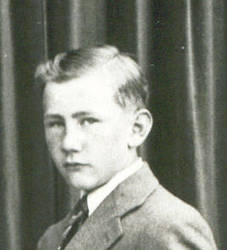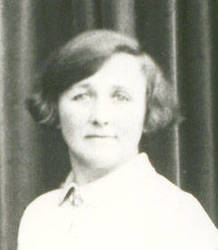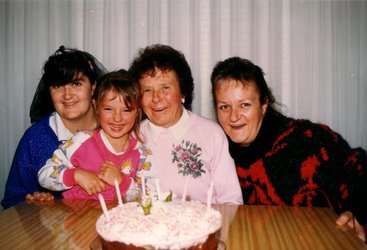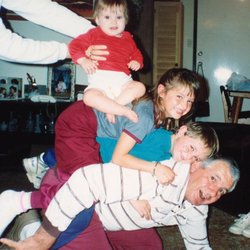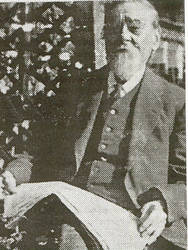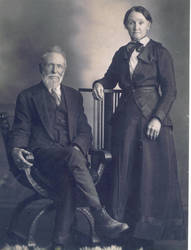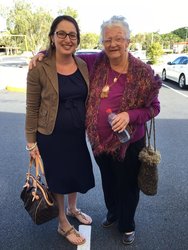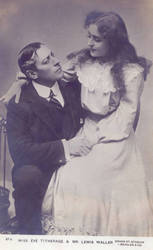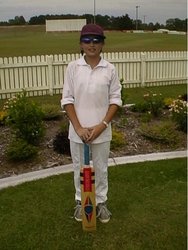The Titheradge Tree has a very interesting past & future, with the expertise of my very best friend Wendy Marshall & the invaluable information from my 2nd cousin Barbara (25years work)this tree would be bare. As it stands we have apples blossoms & it looks fantastic.
The Titheradge crowd, & there is always a crowd, is very family orintated. We stick together thru thick & thin what ever the situation. It is a great family to belong to.
Our family has some interesting & famous relatives, such as the most famous "Madge Titheradge" & her brother "Dion". In that arena I would like to add my own little family (Ian, Cindy & Chris) having made many media releases due to sporting achievements, but I am sure as I go through this great family of ours alot more outstanding achievements will come up.
If you have any photo's or stories of any kind I would love to hear from you, please leave a message in the guest book & I will be in contact or even visit as I get around our great nation often due to sport, & I do get oversea's quite often also. So please do not be shy, lets get this tree on the road to sucess. I am trying to get enough information to write a family book, but it will be very boring without interesting stories, so get those pens writing or your fingers typing and hopefully we will have a Reunion at the end or even in the middle...
Cheers fellow family & I would love to hear from you... Chris T
PS: Here is some interesting info I discovered when looking for our Family Crest...
TITHERADGE
The name TITHERADGE can be traced to the ancient Celtic culture of Wales. Initially the name was from the personal name Tudor, which is the Welsh form of Theodore. The surname TITHERADGE is one of the oldest Welsh names. The lands of Britain have been inhabited by many different ethnic groups, perhaps the oldest of which is the race which hails from the snow-capped mountains and peaceful valleys of Wales.
After the exodus of the Romans in the 5th century A.D., the ancient Britons were left in possession of Western England, present day Wales and Cumbria, while the Germanic invaders, the Saxons, Jutes and Angles continued a determined invasion from the South-East of England. The first recorded King of Wales was Rhodri Mawr, or Roderick the Great. He died in 893, bequeathing Wales to his three sons, Anarawd, who became the King of North Wales, Cadalh, who became King of South Wales and Mervyn, who became King of Powys, or mid Wales.
The history of the name TITHERADGE begins in the time of the ancient Welsh chronicles, in which the first record of the name TITHERADGE was found in Herefordshire where Tudor Trevor was Lord of Hereford, Whittington, and both Maelors. He was founder of the Tribe of the Marches, born in Denbigh, son of Ynyr Ap Cadforch, whose descendants inter-married with the distinguished families of North Wales.
Researchers examined early manuscripts such as the Domesday Book, the Pipe Rolls, Hearth Rolls, the Black Book of the Exchequer, the Curia Regis Rolls, and the TITHERADGE family name was found, but with many different spellings. Variations in the spelling of TITHERADGE include Tudor, Tudyr, Tuder, Tudar and many of these are still in use today. Changes in spelling could occur between father and son, and it was not impossible for a person to be born with one spelling, marry with another, and have yet another on his or her headstone. Preference for a particular spelling variation could signify a connection with a certain branch of the family, a religious adherence, or an affiliation with a political party or cause. On the other hand, variations could also occur due to regional dialects, translations back and forth between languages, and the way that the clerks and church officials of the day chose to record the spelling of a name.
Edward I conquered Wales in the 13th century, and proved to be an onerous overlord over Wales. Spirited, yet unsuccessful revolts, were waged by Llywelyn and his younger brother David, but Wales was to exist under an alien political system, playing a subordinate role in the kingdom of England. A great number of impressive fortresses were then erected by Edward throughout Wales to eliminate any possibility of further revolt. In 1301, King Edward made his son, Lord Edward (who had been born at Caemarfon Castle), Prince of Wales and Count of Chester, and ever since that date, these titles have been automatically conferred upon the first-born son of the English monarch.
By the 15th and 16th centuries, England, ravaged by plagues and famines lost as much as 70% of their working population of peasants. The Welsh, attracted by the economic opportunities, moved eastward into the English cities. Seemingly not affected by the plagues they multiplied amongst the sparse population of England.
In this era, bearers of the family name TITHERADGE were located in Hereford where the descendants of Tudor, the Earls of Richmond merged into the Crown of England in 1485 through Sir Owen Tudor when he married the Queen Dowager of England, widow of King Henry V. Descended were the Dukes of Bedford, Somerset, and Lancaster, and the Prince of Wales, eldest son of Henry VII, and afterwards the Duke of York who would become Henry VIII. Meanwhile junior lines abounded in North Wales at various locations, using cither the name Tudor or Trevor. Notable amongst the family during the late Middle Ages was Sir Owen Tudor.
For the next two or three centuries the surname TITHERADGE flourished and played an important role in local politics and in the affairs of Britain in general.
Throughout the 16th, 17th and 18th centuries, Britain was ravaged by religious conflict Henry the V111 started the great schism between the Roman Church and the English state. The power of the Church, and the Crown, their assessments, tithes, and demands on rich and poor alike broke the spirit of men and many turned from religion entirety, or renewed their faith, pursuing with a vigor and ferocity, the letter of the ecclesiastical law.
Difficult times at home, and opportunity abroad encouraged the emigration of many Welsh. Some went to Ireland where they were known as the Adventurers for land. Essentially, they contracted to maintain and develop the Protestant faith, being granted lands previously owned by the Catholic Irish. The name TITHERADGE may well have arrived in Ireland following the 13th century invasion with the " Welshmen of Hy- Amhalgaidh MicFiachrach," who settled in Ireland. Most of these names were transformed in Irish Gaelic names. Others of Welsh heritage were among those who came to Ireland in successive waves of immigration from the 13th to the 17th centuries.
The New World beckoned the adventurous. Some of the Welsh emigrants sailed from Ireland, but most sailed directly from Wales or England. Others moved to the European continent.
They sailed to the New World across the stormy Atlantic aboard the tiny sailing ships which were to become known as the "White Sails." These overcrowded ships, designed for 100 but frequently crammed with 400 and 500 passengers, spent two months at sea, were wracked with disease, sometimes landing with only 60 to 70 of the original passenger list
In North America, early immigrants bearing the TITHERADGE family name or a spelling variation of the name, were Richard Tudor and his wife Mary, two children and servants, settled in the Barbados in 1678; Lewis Tudor (*Titheradge) settled in New England in 1654; Robert Tudor (*Tither) settled in Virginia in 1773.
Many of the earliest settlers to Australia were convicts, transported from Britain to live and work in the penal colonies. Throughout the 19th century, North America was the primary destination for migrants from Europe. Many also came to Australia, as they were offered incentives and financial assistance.
Notable bearers of this name from recent history include James Tudor, High Commissioner for the Barbados; Sir Haydn Tudor-Evan, Judge of the High Court; David Tudor-Price, Crown Attorney.
Combination of Certificate #87172004292 copyright 1998-2003 Swyrich Corporation. All rights reserved. History of Names (0416) 14577.and Certificate 856420045318 Copyright Swyrich Corporation. All right reserved.
SHIELD
The Gold Shield is the highest calibre shield that is awarded. The Silver overlay means peace and tranquility through war.
The jousting tips denote success in either the sporting arena or more likely the success of the family in service to the Welsh Royals in the field of war against Welsh adversaries. The "Gold" Combatant or Rampant Lion is the one of the highest awards a family can secure and is considered the most revered symbol by opponents in the field.
CREST
The "Gold" Combatant or Rampant Lion as stated above is considered the most revered symbol in the field and when displayed as a Crest denotes the high degree of success that family has had in their service to the Welsh Royals. A Crest is only awarded to a noble family by the Royal family for outstanding services. This is confirmed further with the high honour of being able to display a Black Crown on the head of the Lion. The colour black is used to denote constancy and/or misery. In this instance, given the success awarded to the family, black would denote constancy of service to the Welsh Royals.

